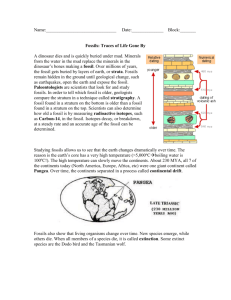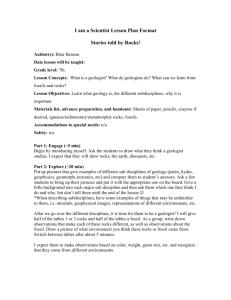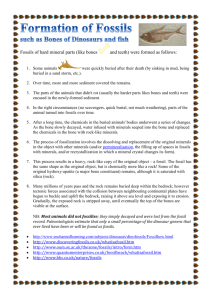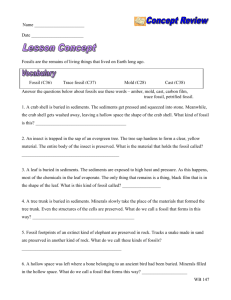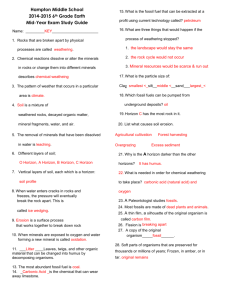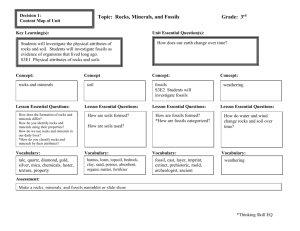How Fossils are Formed Reading
advertisement
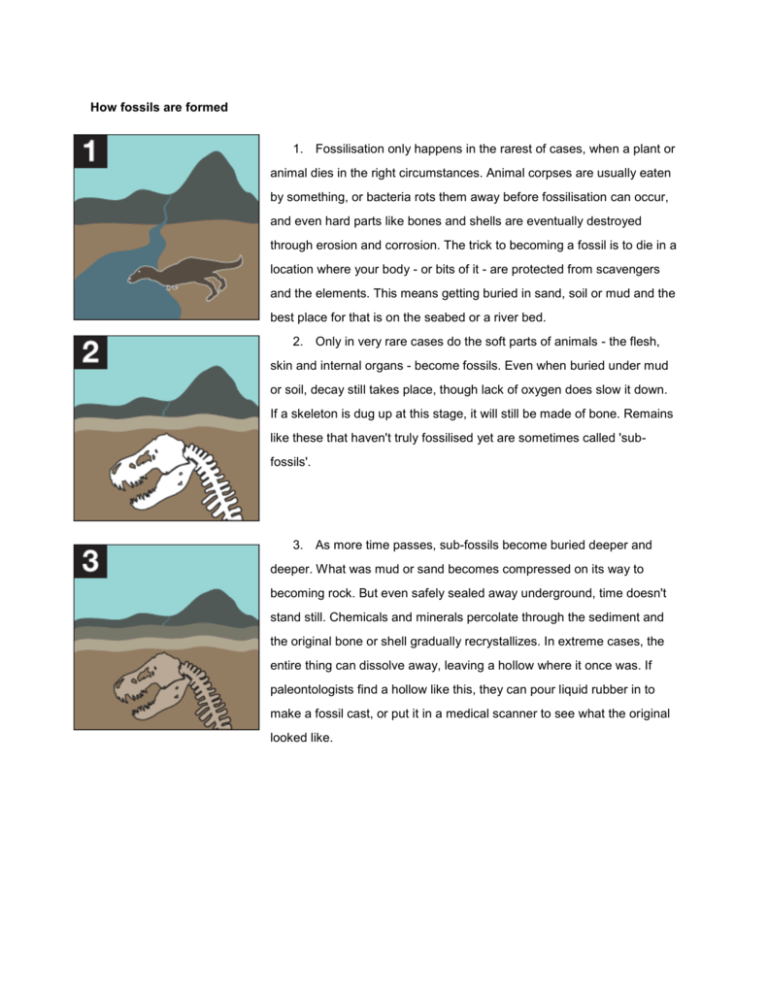
How fossils are formed 1. Fossilisation only happens in the rarest of cases, when a plant or animal dies in the right circumstances. Animal corpses are usually eaten by something, or bacteria rots them away before fossilisation can occur, and even hard parts like bones and shells are eventually destroyed through erosion and corrosion. The trick to becoming a fossil is to die in a location where your body - or bits of it - are protected from scavengers and the elements. This means getting buried in sand, soil or mud and the best place for that is on the seabed or a river bed. 2. Only in very rare cases do the soft parts of animals - the flesh, skin and internal organs - become fossils. Even when buried under mud or soil, decay still takes place, though lack of oxygen does slow it down. If a skeleton is dug up at this stage, it will still be made of bone. Remains like these that haven't truly fossilised yet are sometimes called 'subfossils'. 3. As more time passes, sub-fossils become buried deeper and deeper. What was mud or sand becomes compressed on its way to becoming rock. But even safely sealed away underground, time doesn't stand still. Chemicals and minerals percolate through the sediment and the original bone or shell gradually recrystallizes. In extreme cases, the entire thing can dissolve away, leaving a hollow where it once was. If paleontologists find a hollow like this, they can pour liquid rubber in to make a fossil cast, or put it in a medical scanner to see what the original looked like. 4. In other cases, minerals from the rocks gradually impregnate the bone, shell or wood, changing its chemical composition and making it capable of surviving for as long as - or sometimes longer than - the rock enclosing it. In cases where the original has dissolved away, the minerals can gradually fill the hollow to create a natural cast of the original. So sometimes a fossil doesn't contain anything of the original creature except its shape. Even that shape can take a battering! If the rocks are distorted and squeezed by geological forces, then the fossils within them will be too. 5. Even rocks have a finite lifespan. Eventually the rock enclosing a fossil is eroded away, and the fossil is revealed on the surface of the ground. With luck, a sharp-eyed fossil collector will spot and excavate it. Otherwise the elements will continue to batter it, until it - along with the rocks around it - is reduced once more to sand, silt or mud.

